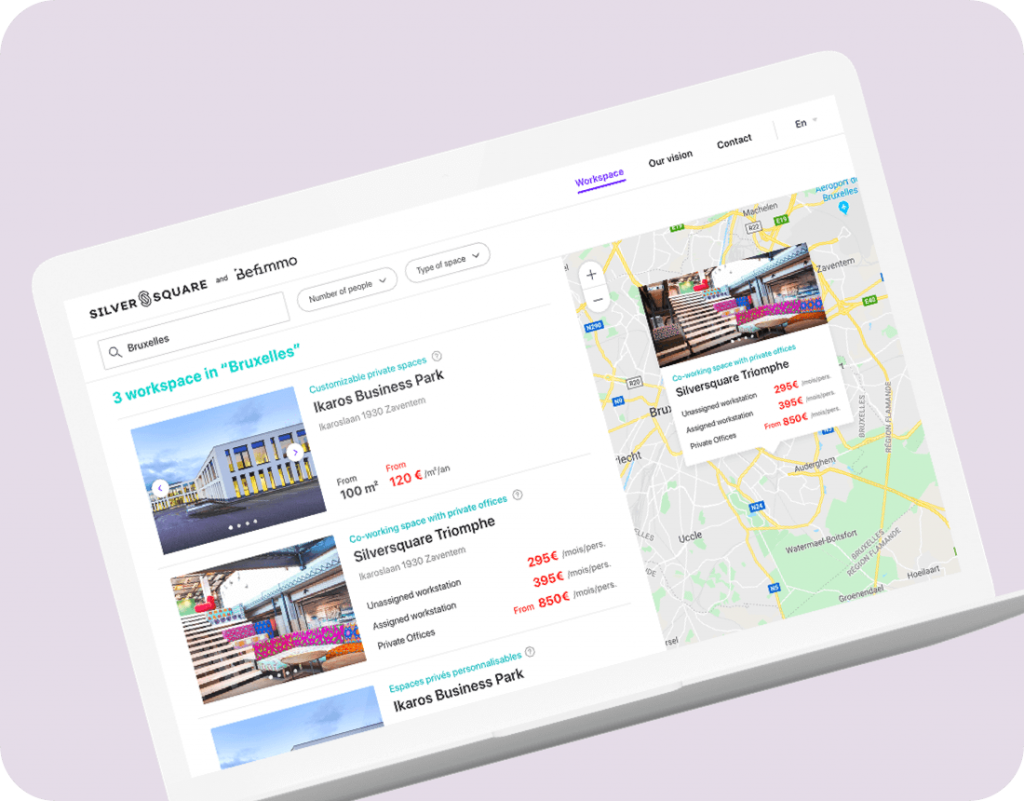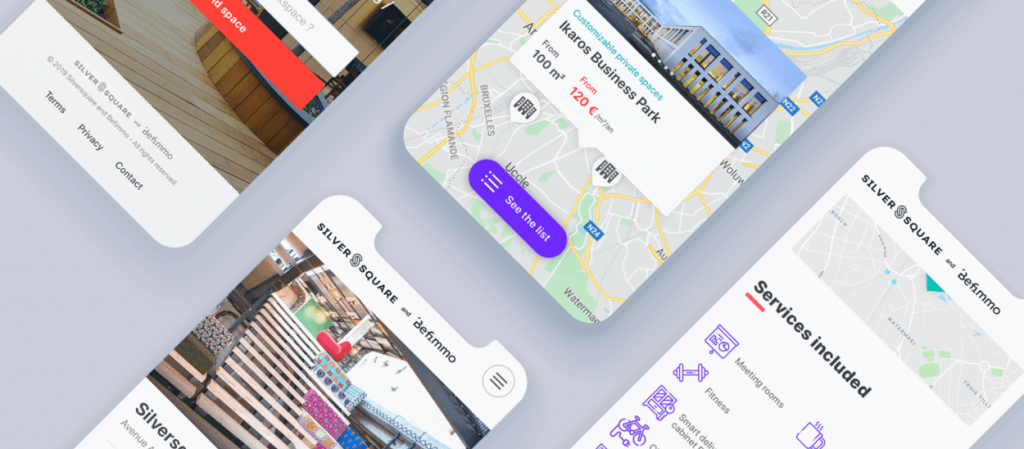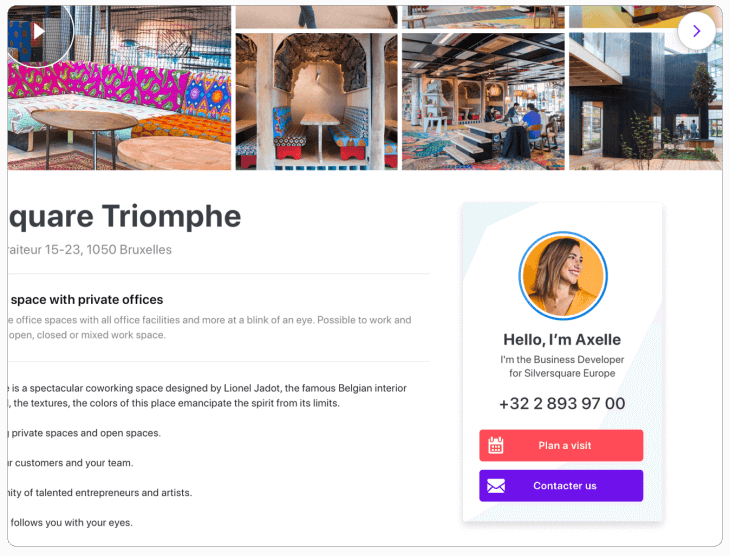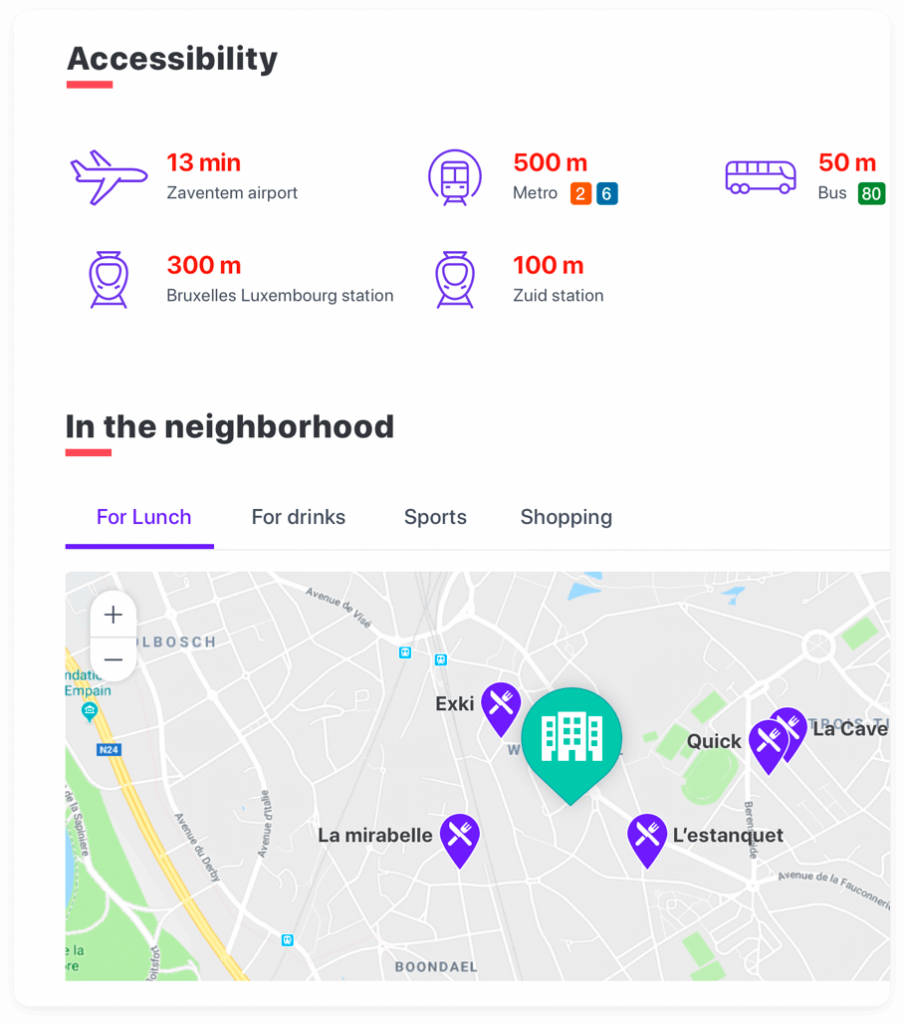A successful digital transformation for Befimmo
The challenge
Bring Befimmo into the digital age. Leverage the potential of new technologies and behaviours. Adopt the rulebook of the new economy and digital entrepreneurs. All this to maintain its pole position in a real estate market that is slowly waking up. A challenge that calls for digital innovation but mostly a change in mindset.

The objective
Accelerate the company’s digital transformation by succeeding in a number of concrete, high-profile projects. This is done hand-in-hand with the company’s teams that have been given a training in lean/agile approaches focused on the user.
Parallel objective : consolidate the partnership with the newly acquired startup Silversquare through a first joint project: launching a joint digital proposal for people looking for offices in Belgium.
Our solution
Our 5-month to-do list:
- A hands-on introductory workshop on Lean UX for the management (the wallet challenge);
- A first innovation project using the Design Thinking approach and the creation of an MVP (Minimum Viable product) four 5 months;
- Scale horizontally in the organisation with other digital innovation projects;
- Implementation of a new transversal organization responsible for the management of digital projects, with a team dedicated to managing change.

Convincing the management
To succeed in Befimmo’s digital transformation required the support of management. A mere theoretical understanding of the proposed new way of working was not enough; we needed a real desire to follow the proposals.
This involved the top management and 25 managers experiencing lean and user centered methods in a concrete way. Their buy-in was needed to continue to spread this Lean UX approach in the organization in “top-down” mode.
Buy-in through experimentation
The program featured no theoretical presentations or classroom training. Concrete scenarios, enabled Befimmo employees – all levels combined – to experience the way entrepreneurs act. For management, for example, this took the form of a one-day seminar during which they had to design an ideal portfolio. For the teams, the involvement in a real project, alongside our teams, allowed them to experiment with the method.
Why ? To help them adopt a change in behavior and paradigms, so that they can in turn spread this state of mind to the entire organization, in a progressive and sustainable way. They saw how to work in a lean, agile, data and people-centered way, in a market facing the rapid penetration of digital technologies. “Changing mindsets and habits takes time, but it’s possible to teach teams to innovate and behave like successful entrepreneurs, even within large structures,” says Reynald Lemaire, Partner in charge of Digital Transformation & Innovation.

Betting on quick successes
Less than 5 months were needed to design and build a first digital product (MVP), without going through the endless phases of analysis and development of a complex and perfect product and a probable loss of motivation.
The method : a one-month design thinking sprint and a 3-month incubation to develop the MVP and then evolve it according to rapid iterations, centered on the user and the data collected.
Building on this success, a second digital innovation project was launched, with a wider scope and the involvement of several departments. An innovative Smart Building solution was designed, again using a lean/agile approach centered on the user, and now deployed in Befimmo’s new buildings.
Managing change across the enterprise
Several phases of design thinking were then initiated in other departments. Based on interviews with end users, we developed concrete innovation roadmaps. The initiatives were quickly developed in the HR, Finance, Customer Care, Property and Marketing departments.
“Launching new digital innovation projects in different departments allows us to introduce new ways of operating and make changes to processes, roles and structures, while preparing and supporting individuals and teams in managing these organizational changes,” explains Reynald Lemaire, Partner in charge of Digital Transformation & Innovation.
During these design phases, the teams directly understood this lean and agile methodology, centered on people. The efficiency and energy they bring has made it easier for the teams to adhere to the changes related to the digital transformation of the company.
“Rather than acquiring innovative start-ups and products developed by others, it is better to invite external resources with the right attitude and skills into the organization,” notes Reynald Lemaire. “They will be able to lead projects with your internal teams, in order to make them adopt organizational changes in a sustainable way. It’s important to start with the most motivated people who can embrace this change, and then expand that transition to the entire company.”
Create a team dedicated to change
Any change in an organization generates fears, resistance and tensions. It is inevitable. It is therefore essential for any company undergoing change to prepare and support this transition with intelligence. This minimizes the time it will take, helps them come out stronger than before and generates maximum value.
A digital transformation is even more difficult to manage as it not only introduces new technologies, it also requires changing the way you work (lean/agile, user-centric) to be able to manage the acceleration of both technological and human changes.
The same goes for Befimmo. The company has set up a new transversal structure and now organizes change management via an internal team, dedicated to this issue and advised by Anais Digital. A new organization that continues to improve and develop gradually.
Any organization can succeed in its digital transformation regardless of its degree of maturity.
For this, two basic conditions are needed :
- Top management must desire this change, which will begin at the top ;
- Top management must have a strong vision of where the organization wants to go, thanks to a user and people-centered approach.
When these two conditions are met, it is enough to start small, in the field, and to develop this digital transformation gradually, but rapidly. While also caring from the outset about the human implications that all these organizational changes will entail.

